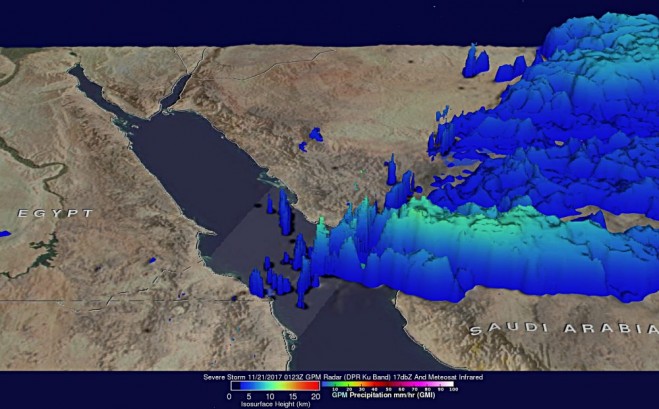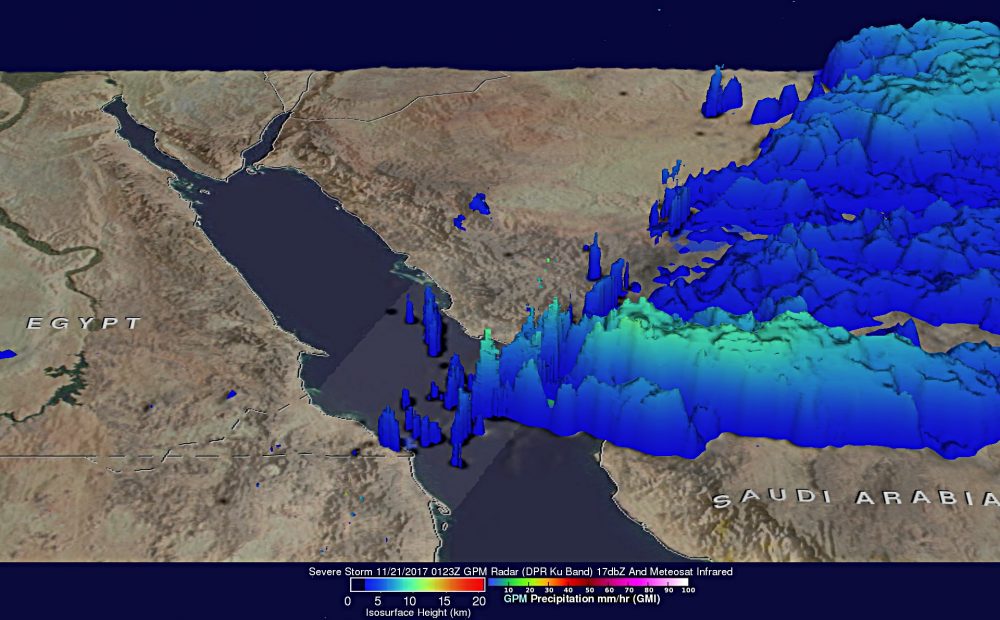

NASA’s Global Precipitation Measurement Mission (GPM) core satellite analyzed severe storms that moved into Jeddah, Saudi Arabia, on Nov. 21, 2017. Heavy downpours caused schools and universities to close, and the General Authority of Meteorology and Environment Protection predicted that heavy rain will continue for a couple days.
At NASA’s Goddard Space Flight Center in Greenbelt, Md., GPM data were used to create a 3D view of precipitation of the storms over western Saudi Arabia, showing that a few storm tops over the Red Sea were reaching heights above 10 kilometers (6.2 miles).
Photo Credit: NASA/JAXA, Hal Pierce